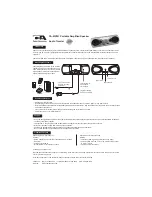
Note
Be careful when using byte-counting image specifiers. If the
requested number of bytes does not match the actual number
available, data might be lost, or the program might enter an endless
wait state.
The suppression of the EOL sequence is frequently necessary to
prevent a premature termination of the data input. When not
specified, the typical EOL termination occurs when an ASCII LF
(line feed) is received. However, the LF bit pattern could
coincidentally occur randomly in a long string of binary data, where
it might cause a false termination. Also, the bit patterns for the
ASCII CR (carriage return), comma, or semicolon might cause a false
termination. Suppression of the EOL causes the computer to accept
all bit patterns as data, not commands, and relies on the HP-IB EOI
(end or identify) line for correct end-of-data termination.
Related statements used by some computers:
CONVERT
IMAGE
IOBUFFER
ON TIMEOUT
SET TIMEOUT
TRANSFER
This completes the HP-IB Command Statements subsection. The
following material explains the SCPI programming codes, and shows
how they are used with the OUTPUT and ENTER HP-IB command
statements.
Getting Started Programming
Содержание 8360 B Series
Страница 231: ...HP IB Henu See Also CONNECTORS HP IB Getting Started Programming in Chapter I H 2 Operating and Programming Reference ...
Страница 363: ...NF N 2 w z P w D I oa 0 i B 6 7 On s5 n 20 a g 9 i T2 ...
Страница 406: ...2b Menu Maps Menu Maps 2b 1 ...
Страница 407: ...t t m ALC Bandwidth Select Module Sense Low High Auto AUTO Front Rear None ALC MENU ...
Страница 412: ...rMENU SELECT 1 Fault Fault Info1 Info2 Fault Info3 Clear Fault S E R V I C E M E N U 6 ...
Страница 469: ...5 Instrument History This chapter is left blank until this manual requires changes Instrument History 5 l ...
















































